Areas of investigation in hemophilia
Scientists are researching different ways to achieve hemostasis.
Garrett has severe hemophilia A.
Areas of investigation in hemophilia
Scientists are researching different ways to achieve hemostasis.
Different ways to approach the coagulation cascade
Procoagulant replacement therapies focus on replacing, mimicking, or bypassing deficient procoagulant FVIII or FIX proteins.1,2
There is ongoing research on novel targets utilizing alternative approaches.3-5
In addition to gene therapy and substitution therapies like factor mimetics, anticoagulation inhibition is another way scientists are researching the management of hemophilia.
Researching hemostasis by anticoagulant inhibition vs procoagulant addition
In the coagulation cascade, a balance between procoagulants and anticoagulants is necessary to prevent bleeding episodes.1,4
Since anticoagulants such as or including tissue factor pathway inhibitor (TFPI), activated protein C (APC), protein S (PS), and antithrombin (AT) inhibit thrombin generation in the cascade at different points, targeting these proteins will aim to achieve hemostasis.1,6
People without hemophilia
In people without hemophilia, there is a balance between bleeding and clotting and the ability for blood to coagulate when needed.7
People with hemophilia
In people with hemophilia, there is a lack of clotting Factor VIII or Factor IX, disrupting the balance between bleeding and clotting. This results in a bleeding tendency because the blood is unable to coagulate when needed.7
Factor replacement
Factor replacement therapy and other pro-coagulant therapies restore balance by adding more clotting factor to assist the blood in coagulation when needed.8
Treatment classes that increase clotting proteins:
Factor VIII or Factor IX | Bypassing agents | Factor VIII mimetic | Gene therapy6
Anticoagulant inhibition
Some areas of investigation in hemophilia being researched may restore balance with a different approach. Instead of adding clotting factors, they aim to inhibit anticoagulant proteins to help minimize the potential for bleeding.9
Investigational therapeutic strategies that aim to inhibit anticoagulant proteins:
Anti-TFPI | APC inhibitor | PS inhibitor | Antithrombin inhibitor
APC=activated protein C; PS=protein S; TFPI=tissue factor pathway inhibitor
Examples of therapy strategies that add procoagulants
- FVIII or FIX: Factor VIII or Factor IX replacement therapy.
- Bypassing agents: Treatment for patients with high-titer inhibitors. FVIIa is used to bypass the factors that are blocked by the inhibitor to help the body form a clot.4
- FVIII mimetic: A substitution treatment that acts as FVIII to bridge the clotting cascade.4,6
- Gene therapy: A correction of a gene error through the insertion of a normal gene to replace an abnormal gene. In hemophilia, a copy of the altered FVIII or FIX gene can be inserted into cells.6
Examples of investigational strategies that aim to block anticoagulants
- Anti-TFPI: Designed to block tissue factor pathway inhibitor and may help restore thrombin generation. TFPI is an anticoagulant protein that blocks the initial steps of the extrinsic coagulation pathway.1,6
- Activated protein C inhibitor: Designed to block activated protein C, an anticoagulant protein that degrades FV and FVIII.1,10
- Protein S inhibitor: Designed to block protein S, an anticoagulant acting as a cofactor for APC and TFPI.11
- Antithrombin inhibitor: Designed to block the hepatic synthesis of antithrombin, resulting in more thrombin generation.6
Exploration doesn’t stop with coagulation
Different approaches to administration are also being investigated.
Garrett has severe hemophilia A.
Exploration doesn’t stop with coagulation
Different approaches to administration are also being investigated.
Garrett has severe hemophilia A.
Stay in the know
Keep up with research in hemophilia.
References:
- Callaghan MU, Sidonio R, Pipe SW. Novel therapeutics for hemophilia and other bleeding disorders. Blood. 2018;132(1):23-30.
- Okaygoun D, Oliveira DD, Soman S, Williams R. Advances in the management of haemophilia: emerging treatments and their mechanisms. J Biomed Sci. 2021;28(1):64.
- Wiley RE, Khoury CP, Snihur AWK, et al. From the voices of people with haemophilia A and their caregivers: challenges with current treatment, their impact on quality of life and desired improvements in future therapies. Haemophilia. 2019;25(3):433-440.
- Srivastava A, Santagostino E, Dougall A, et al. WFH Guidelines for the Management of Hemophilia, 3rd edition [published correction appears in Haemophilia. 2021 Jul;27(4):699]. Haemophilia. 2020;26(suppl 6):1-158.
- Mahlangu J, Cerquiera M, Srivastava A. Emerging therapies for haemophilia - Global perspective. Haemophilia. 2018;24(suppl 6):15-21.
- Butterfield JSS, Hege KM, Herzog RW, Kaczmarek R. A molecular revolution in the treatment of hemophilia. Mol Ther. 2020;28(4):997-1015.
- Palta S, Saroa R, Palta A. Overview of the coagulation system. Indian J Anaesth. 2014;58(5):515-523.
- Current treatments. National Hemophilia Foundation. Accessed January 30, 2023. https://www.hemophilia.org/bleeding-disorders-a-z/treatment/current-treatments
- Future therapies. National Hemophilia Foundation. Accessed January 30, 2023. https://www.hemophilia.org/bleeding-disorders-a-z/treatment/future-therapies
- Polderdijk SG, Adams TE, Ivanciu L, Camire RM, Baglin TP, Huntington JA. Design and characterization of an APC-specific serpin for the treatment of hemophilia. Blood. 2017;129(1):105-113.
- Pilli VS, Plautz W, Majumder R. The journey of protein S from an anticoagulant to a signaling molecule. JSM Biochem Mol Biol. 2016;3(1):1014.
